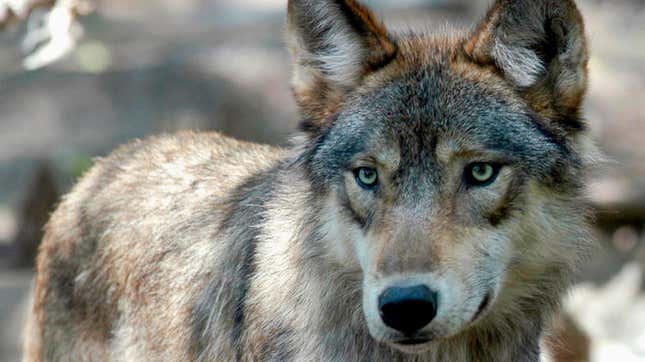
For years, conservationists have successfully fought to restore the Midwest’s wolf population. A new state policy could imperil that progress: Wisconsin’s Natural Resources Board voted last week to allow hunters to kill up to 300 wolves during a fall killing period this year, ignoring recommendations from an advisory panel of biologists.
The scientists from the state’s Department of Natural Resources said the board should impose a limit of hunting 130 wolves based on concerns about a state-sanctioned hunt in February. During that four-day hunting and trapping season, Wisconsin hunters killed 218 gray wolves despite officials capping the kill at 119. The hunt, which came just a month after gray wolves lost protections under the federal Endangered Species Act, killing an estimated 20% of the state’s wolf population.
“Wisconsin’s February 2021 hunt earned Wisconsin a black eye across the state and nationally for conducting a wolf hunt divorced from science and ethical norms,” Elizabeth Ward, director of the state’s chapter of the Sierra Club, said at a heated meeting with the Natural Resources Board last Wednesday, speaking in support of the DNR’s biologists. “We can’t allow this to happen again.”
She and other conservationists noted that a green sheet from the board itself said that the effects of the February hunt are “uncertain.” Five of seven members voted to ignore the department’s recommendations and increase the killing quota to 300 wolves. Right-wing members of the board claimed that the wolves in the state are abundant and said hunting will help manage the pack and protect livestock. Last year, though, the DNR documented just 235 confirmed livestock and work animal depredations tied to wolves where it issued payouts to farmers. (For comparison, the state has 3.45 million cows.)
Wolves have made an impressive comeback in Wisconsin. In 1999, the DNR created the 193-page Wisconsin Wolf Management Plan, setting a population goal of 350. The state has exceeded that goal. The body’s latest estimates pegged the population at about 1,000 animals in late 2019.
Conservative board members said that means there are plenty of wolves to kill in the state. But at Wednesday’s meeting, DNR attorney Cheryl Heilman said 350 wasn’t a healthy population target; it’s the minimum number for holding a hunt.
Wisconsin’s wolves have been the focal point of an ongoing state and nationwide battle. In 2011, former Republican Gov. Scott Walker signed a bill requiring officials to have hunting periods each year. In 2014, a federal judge placed wolves on the Endangered Species list. The Trump administration removed those protections last fall and the decision was finalized just days before President Joe Biden was inaugurated in January.
Wolves are apex predators, and when their populations dwindle, it allows elk populations to run rampant and can throw entire ecosystems out of whack. But livestock and hunting lobbyists are a powerful force in Wisconsin politics. The move also fits with other states controlled by Republicans. Montana and Idaho have both implemented policies to slaughter wolves, endangering one of the greatest conservation success stories of the past 25 years.
Even though the board set a kill limit of 300 wolves for state-licensed hunters, they probably won’t actually get to hunt that many. As part of treaties ceding territory in the 1800s, the state’s Chippewa tribes are legally authorized to hunt half of the state’s allowed quota of wolves. But the tribes consider wolves to be sacred creatures and therefore don’t hunt them, so if they claim their full half of the limit, those wolves will likely remain living, meaning just 150 will die.